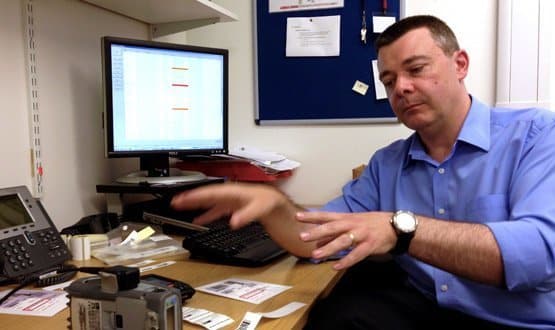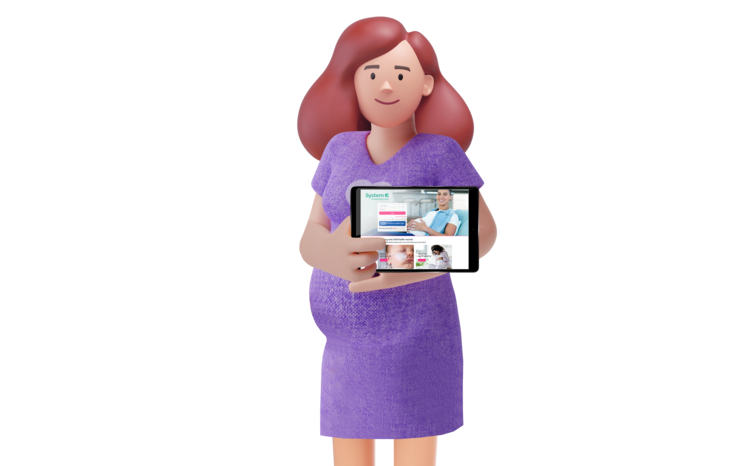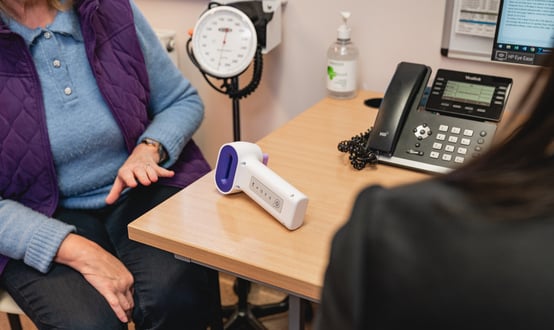Ready, teddy, go
- 3 July 2013

When Oxford University Hospitals went live with Cerner Millennium in late 2011, the trust treated the deployment as a ‘major incident’.
In a meeting room in the John Radcliffe Hospital, the trust’s director of planning and information, Andrew Stevens, explains that this involved fortnightly, then weekly, then daily meetings with a group of 60-70 supervisors from across the trust, running into and throughout the go-live.
Oxford had three golden rules for implementation. Number one – ‘bad karma’ – was the recognition that there were going to be problems, but that people should not panic.
“We were completely honest about it, that’s one of the most important aspects for how we prepared people,” Stevens explains.
Rule number two was ‘hug a teddy’. Teddies were set up as dummy patients to try out the new system.
The hug rule encouraged people to think about the emotional needs of staff and patients going through the process and whether they had adequate support.
The third rule, rather strangely, was dubbed ‘Welsh rugby team’. As the implementation was happening around the time of the Rugby World Cup, it encouraged team spirit.
The major incident approach involved all reported issues with the deployment being ranked as gold, silver or bronze.
These would be reported at the morning briefing, giving the team an overview of what issues were occurring, and whether they were impacting on the whole trust or just a part of it.
As issues were resolved, the trust flipped back to ‘business as usual’. Stevens says if he had his time again, he would push to move more quickly to a state of normal operations.
No pain no gain
Oxford was one of three ‘greenfield’ sites in the South of England that were scheduled to receive Millennium from BT under NPfIT, after Fujitsu had pulled out of the programme with its Cerner deployments only partially completed.
The acute trust merged with the Nuffield Orthopaedic Centre, which received the system under the old arrangements in December 2005, in November 2011.
One month later, it went for a “big bang switch off” of its old patient administration system, while also changing over to Cerner Millennium in A&E and its maternity department.
“That was a big thing. We were the only trust in the country having to do that, because the Nuffield was already live. Bringing the other three [sites] onto a platform with a live system added to the technical complexity,” Stevens says.
“That was potentially the biggest change the trust has ever seen in terms of the number of people affected and the way it affected them.”
The stabilisation of the system took longer than anticipated, with data quality issues taking 12-18 months to resolve rather than the expected six to nine months; however the trust takes pride in the fact that it never stopped reporting data to its commissioners.
Stevens says it chose Cerner for its clinical functionality and now has the foundation on which to build its electronic patient record
“We think that as a trust we are very much at a cusp. We have gone through the pain of putting in an EPR,” he adds. “The vision is that it’s not just a hospital system, it’s about integration with GPs and clinical network.”
Building on a foundation
Oxford is now in phase two of its EPR project, which involves the roll-out of limited clinical functionality such as order communications, admissions, discharges and transfers in real-time.
Chief clinical information officer Dr Paul Altmann says that picking small developments, which help clinicians to do their job, builds the credibility of the system.
For example, the trust had an issue with performance on Venous Thromboembolism assessments, which were under the nationally required 90%. Millennium now prompts doctors to do these and the rate is up past 95%.
Nuffield Orthopaedic surgeons are also used to share the good news with their new Oxford colleagues.
“It’s been particularly useful to have orthopaedic surgeons championing the system, because often surgical departments are the more challenging areas when it comes to getting these types of things adopted,” says Dr Altmann.
“By the end of the summer, phase one of the clinicals will be complete. Then, we can begin to do really nice things where we take away paper forms and really drive adoption from the majority, to 100%. That’s when you really start to see benefits.”
Outpatients at the Nuffield no longer have paper records. Inpatients do, but won’t once the trust has deployed a downtime system so the EPR can be viewed offline.
Paperless prescribing
Key patient safety benefits are linked with an e-prescribing project, which is part of phase three and already underway.
Over the next few months, the trust is moving the discharge process for TTO [to take out] drugs from a home grown browser-based system into the EPR.
That will become part of a trust-wide e-prescribing and medicines administration system due to go live in June next year; at the same time as two intensive care units deploy Millennium’s iNet.
As the roll-out of clinical functionality has progressed, Dr Altmann has noticed a big increase in interest from clinicians about what the system can do for them.
More than once, as we navigate the John Radcliffe’s rabbit warren-like hallways, clinicians collar him for some information about what is coming next in the EPR project.
Meanwhile, the trust needs to decide what to do about its historic and remaining paper notes. It is looking at an electronic document management and scanning solution as part of the new contract that it needs to get in place as the national programme’s contracts come to an end.
Oxford is looking to join a framework contract drawn up for trusts in London that are using, or that are likely to use, Millennium, as a route to procuring a new contract when the present arrangements run out in 2015.
Telling the story of maternity
Some things have not been plain sailing at Oxford. Dr Altmann admits that the trust went live with a “sub-optimal” maternity configuration in 2011.
A great deal of work has been done since then to enhance the maternity functionality, which went live this March.
Sylvia Ashton, clinical midwifery manager, says it took a year to work out what maternity services wanted. Key to this was access in the community, where 90% of maternity care is delivered.
About 100 maternity staff can now access Millennium either via their community bases or in GP surgeries. They can use it for booking women into visits and receiving electronic discharges from the hospital.
The community team have also been testing devices for accessing the EPR remotely. Starting soon with a pilot in Banbury, the idea is that all maternity staff should eventually have their own iPads.
Ashton says the maternity department has “gone on a huge journey in a very short time.” “People underestimated their abilities,” she says. “They did always use a computer at work, but they had to get used to a system that looked so different.”
Midwives can no longer imagine working without Millennium and, like other staff, have started asking about what they can do next.
Into delivery
Obstetric consultant Mr Sujay Chakravarti says the next step is to start using the EPR in real-time on the delivery suite.
Having more information captured electronically should mean that maternity staff can spend more time with their patients. The should be able to spend less time “telling the story” of a woman’s pregnancy to doctors; and to have access to notes made in A&E or at a previous birth, instead of filling in the same forms again.
The team has also introduced a ‘pregnancy summary’ which pulls information from other parts of the EPR, giving a quick view for clinicians.
Tony McDonald, general manager of women’s services, describes the project as “building up a momentum.” “Teams and clinicians are asking ‘can you use if for this or change that?’ rather than seeing it as something we are imposing,” he says.
Further use of the system has gone from a question of ‘if’ to ‘when’, as the trust moves “ahead of the curve” in its use of IT, he concludes.




